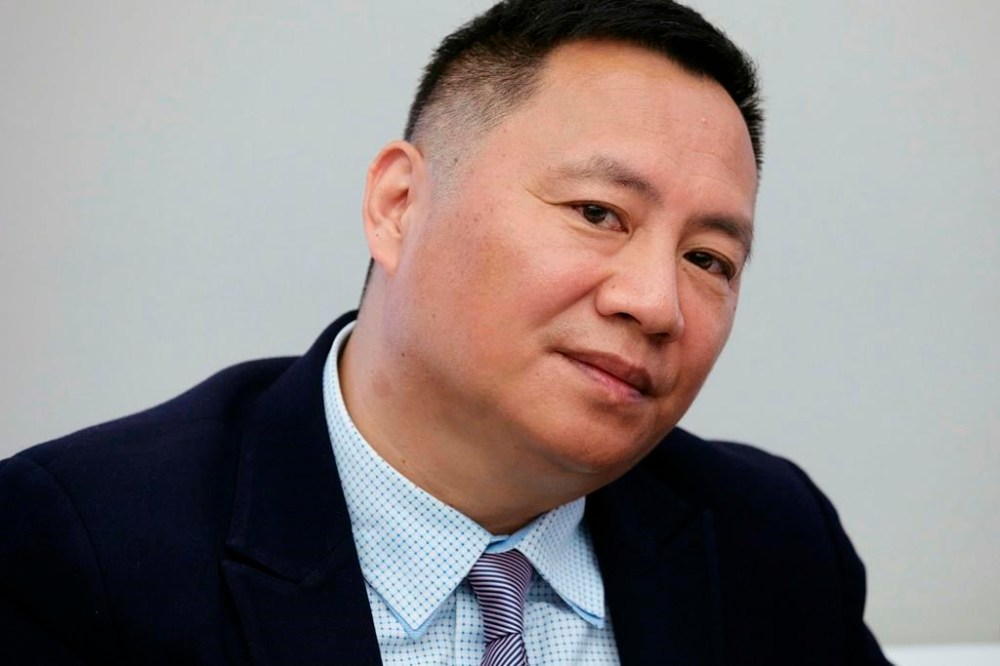As China cracks down on dissent, New York City gives refuge to exhibit remembering Tiananmen Square
Advertisement
Read this article for free:
or
Already have an account? Log in here »
To continue reading, please subscribe:
Monthly Digital Subscription
$0 for the first 4 weeks*
- Enjoy unlimited reading on winnipegfreepress.com
- Read the E-Edition, our digital replica newspaper
- Access News Break, our award-winning app
- Play interactive puzzles
*No charge for 4 weeks then price increases to the regular rate of $19.00 plus GST every four weeks. Offer available to new and qualified returning subscribers only. Cancel any time.
Monthly Digital Subscription
$4.75/week*
- Enjoy unlimited reading on winnipegfreepress.com
- Read the E-Edition, our digital replica newspaper
- Access News Break, our award-winning app
- Play interactive puzzles
*Billed as $19 plus GST every four weeks. Cancel any time.
To continue reading, please subscribe:
Add Free Press access to your Brandon Sun subscription for only an additional
$1 for the first 4 weeks*
*Your next subscription payment will increase by $1.00 and you will be charged $16.99 plus GST for four weeks. After four weeks, your payment will increase to $23.99 plus GST every four weeks.
Read unlimited articles for free today:
or
Already have an account? Log in here »
Hey there, time traveller!
This article was published 01/06/2023 (904 days ago), so information in it may no longer be current.
NEW YORK (AP) — Fangsuo Zhou, now in his 50s, remembers all too well that dispiriting spring day in 1989 when tanks rolled into Beijing’s Tiananmen Square. University students and others were beaten and bloodied when communist troops swarmed in to end a pro-democracy protest. Hundreds and possibly thousands died.
For years, Zhou, who left China after the crackdown and now lives in New Jersey, has been collecting what he calls “evidence” of China’s brutality.
Those items — blooded towels, blood-soaked banners that had been turned into tourniquets, newspaper clippings, letters and a tent used by student protesters during their seven-week demonstration — are now the centerpiece of the “June 4 Memorial Exhibit,” housed on the fourth floor of a New York City office building.

It carries on the mission of a similar exhibit in Hong Kong shuttered by the communist government two years ago.
“This is the most important legacy for China,” Zhou said during a preview of the collection, which opens to the public Friday.
He cannot forget, he said, nor should the uprising ever be forgotten — even as the Chinese government has sought to erase reminders of what happened at Tiananmen Square.
“We are keeping the unchangeable evidence for what the CCP has done,” he said, referring to the Chinese Communist Party.
Since the uprising, monuments, memorials and statues were erected so Tiananmen would be rememebered, particularly in Hong Kong, once a British outpost but now again under control by the Chinese government.
But in recent years, China’s Communist Party has become more aggressive in squelching dissent and in its attempt to erase any reminders of days when tens of thousands of students challenged its power at Tiananmen.
Hong Kong authorities removed statues and monuments dedicated to the protests, including a sculpture called the “Pillar of Shame, depicting bodies piled atop one other as a reminder of those killed during the final days of the uprising.
”They want to make everybody forget that they are regime built on violence and lies,” said Dan Wang, another student organizer, who along with Zhou, was among those the government blamed for the weekslong protest.
“We have obligation and responsibility to establish this memorial exhibition,” he said, “to uphold the truth of history and to counter the CCP is attempt to erase historical memory.”
Exhibit organizers decided to house the collection of memorabilia in midtown Manhattan — not in Chinatown — to make the history more accessible to the broader population.
Earlier this year, Hong Kong officials jailed three organizers of a now-defunct pro-democracy group that had organized vigils each June commemorating the 1989 unrest. They were convicted of failing to comply with requests by national security police to provide certain information.
The vigils drew tens of thousands of participants. But the yearly observances stopped after 2019 — the 30th anniversary of the student uprising in Beijing — because of the COVID-19 pandemic and the government has not allowed the event to resume.
Over seven weeks in 1989, pro-democracy students converged at Beijing’s Tiananmen Square to protest corruption and push for a fairer and more open society — a demand that would have meant the Community Party would have to voluntarily give up its authority over education, employment, family planning and many other aspects of life.
While it was the most serious upheaval in China since the Cultural Revolution, the student-led movement failed to succeed and was eventually crushed when the People’s Liberation Army rolled in with tanks and armed troops who forcibly removed the protestors. It remains unclear how many died.
Under British control, Hong Kong residents had freedoms unknown to their counterparts in communist China. After the United Kingdom relinquished its rule over Hong Kong, Beijing allowed many of those freedoms to continue. But over the years, it has shown less patience with dissent, launching crackdowns that have led to the arrests of dissidents.

